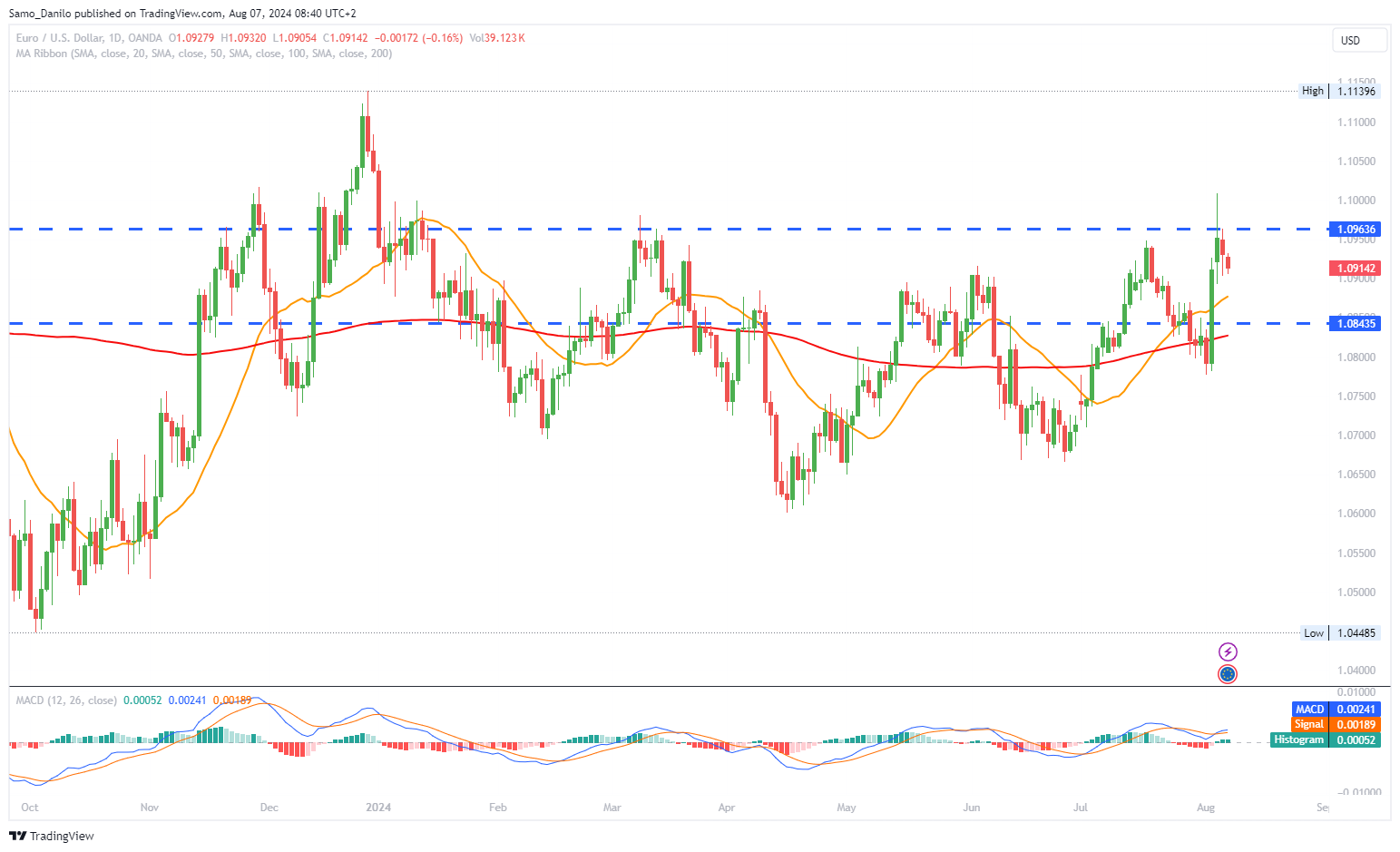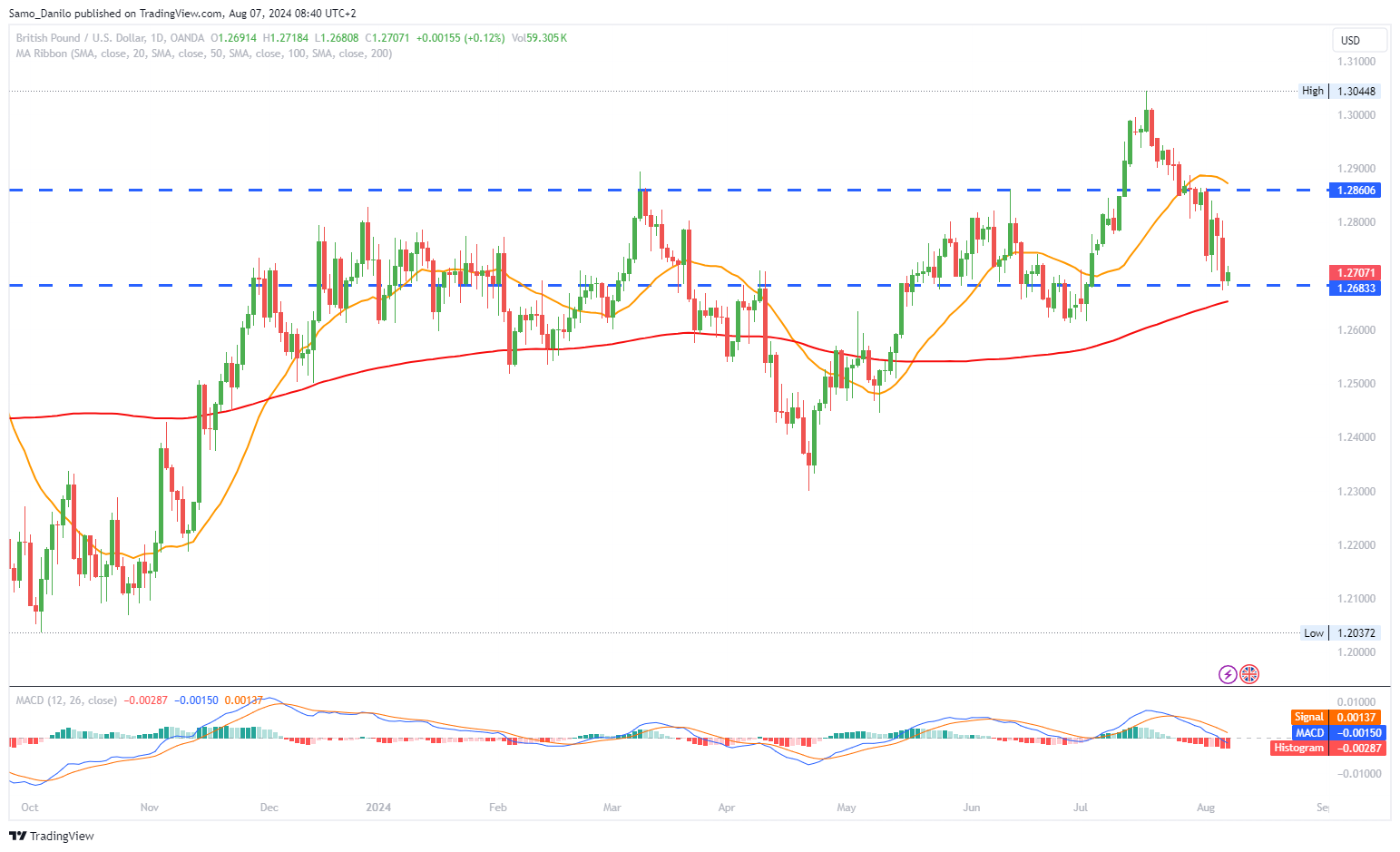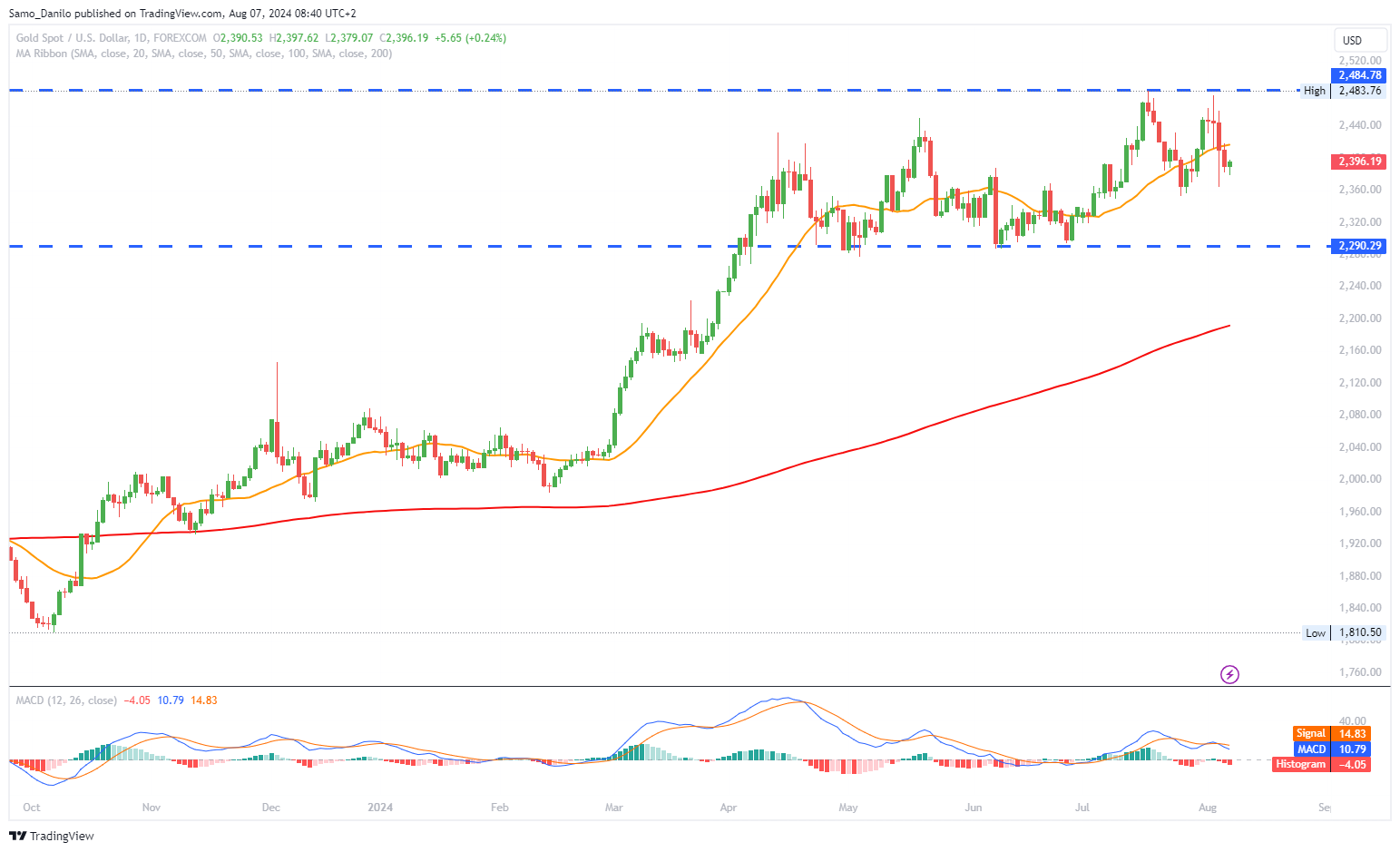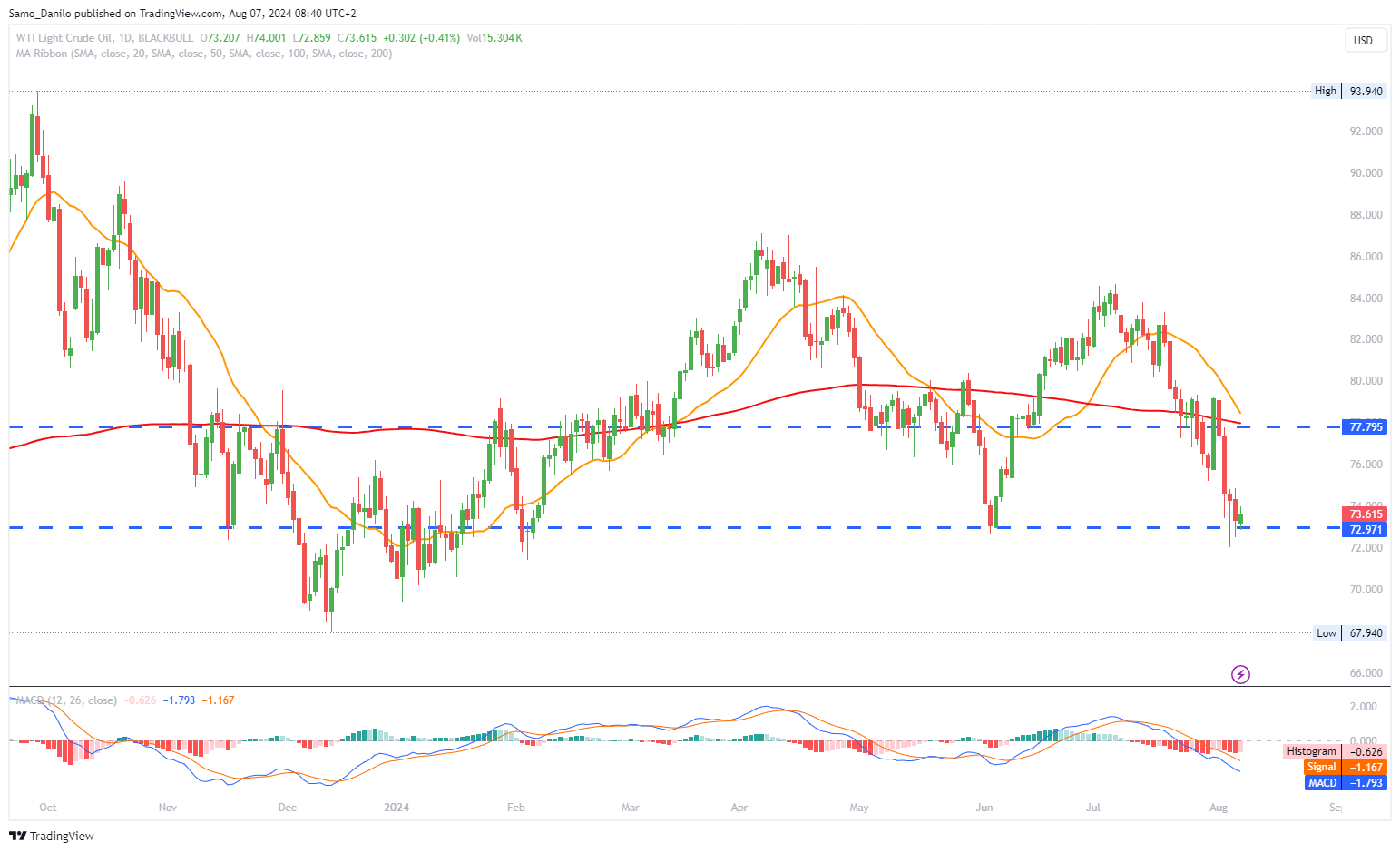EURUSD
- Renewed Selling Pressure: EUR/USD faced renewed selling pressure on Tuesday, erasing two consecutive days of gains. This pressure stemmed from a resurgence in the US Dollar (USD) and a generally improved tone in global stock markets.
- Trading Performance: The EUR/USD pair traded softer near 1.0915 after retreating from a seven-month high of nearly 1.1008 during the European trading hours on Wednesday.
- Fed Officials' Statements: Comments from some Federal Reserve officials (A. Goolsbee and M. Daly) contributed to the USD's strength. They suggested that markets might have overreacted to recent US labor market results, thereby dismissing fears of a US recession.
- US Trade Deficit: The US trade deficit narrowed to $73.1 billion in June, as reported by the US Census Bureau on Tuesday. This improvement was driven by an increase in the value of exports of goods and services, marking the most significant rise since earlier this year.
- Eurozone Economic Data: Conversely, the Euro (EUR) faced selling pressure due to sluggish economic data from the eurozone. Eurostat revealed on Tuesday that Eurozone retail sales unexpectedly fell by 0.3% in June, contrasting with a 0.5% increase in the previous month.
Closing statement: The EUR/USD pair's recent decline is influenced by the strengthening USD and mixed economic signals from both sides of the Atlantic. While the US trade deficit improvement and Fed officials' comments support the USD, weaker eurozone retail sales add pressure on the EUR. Moving forward, the pair may remain under pressure as traders monitor further economic data and central bank signals.
GBPUSD
- Recent Recovery: GBP/USD retraced its recent losses and traded around 1.2700 during the European session on Wednesday.
- US Dollar Weakness: The upside in GBP/USD can be attributed to the tepid US Dollar (USD), which followed rising expectations of a more aggressive rate cut starting in September. This sentiment was fueled by weaker US employment data in July, raising fears of a looming US recession.
- Fed's Stance: Chicago Fed President Austan Goolsbee stated that the central bank is prepared to act if economic or financial conditions worsen, further influencing the USD's weakness.
- BoE Rate Cut Expectations: Market expectations now include the possibility of two additional quarter-point rate cuts by the Bank of England by December, which impacts the outlook for the British Pound (GBP).
- Risk Aversion: The GBP's upside potential could be limited by general risk aversion in the market, potentially capping further gains.
| SMA (20) | Rising |
|
|
| RSI (14) | Falling |
|
|
| MACD (12, 26, 9) | Falling |
|
|
Closing statement: The GBP/USD pair's recovery around 1.2700 is driven by the weaker USD and market expectations of rate cuts by both the Federal Reserve and the Bank of England. However, the British Pound's potential for further gains may be constrained by overall market risk aversion. Future movements will likely depend on upcoming economic data and central bank actions.
GOLD
- Extended Downtrend: Gold prices are extending their losing momentum into the fifth straight day on Wednesday, approaching weekly lows amid a broadly firmer US Dollar.
- Equity Market Influence: A global sell-off in the equity markets, triggered by fears of the US tipping into recession, seems to have eased due to some bargain buying. This has exerted pressure on the safe-haven gold price on Wednesday.
- US Trade Data: Government data released on Tuesday showed that the US trade deficit fell by 2.5%, to $73.1 billion in June from $75.0 billion in May, owing to a 1.5% rise in exports of aircraft and US-produced oil and gas.
- Fed Rate Cut Expectations: Markets are pricing in a 100% chance that the Federal Reserve will start lowering borrowing costs at the upcoming policy meeting in September and a near 70% probability of a 50-basis-point rate cut.
- Consolidation Phase: In the absence of any relevant macroeconomic data from the US, the market might move into a typical pattern of consolidation while awaiting the next major fundamental catalyst before placing fresh directional bets.
| SMA (20) | Slightly Rising |
|
| RSI (14) | Slightly Falling |
|
| MACD (12, 26, 9) | Slightly Rising |
|
Closing statement: The XAU/USD pair continues to face pressure from a stronger US Dollar and eased fears of a recession-triggered equity sell-off. With market expectations firmly set on upcoming Federal Reserve rate cuts, gold prices might enter a consolidation phase, awaiting further macroeconomic cues to determine the next directional move.
CRUDE OIL
- Middle East Tensions: Fear of a wider Middle East conflict boosts the WTI price. Iran's vow of retaliation against Israel and the US following the assassination of two militant leaders has sparked concerns about a broader conflict potentially affecting oil supplies from the region, per Reuters.
- Strategic Petroleum Reserve: On Tuesday, the US Department of Energy announced it would buy 3.5 million barrels of crude oil for the Strategic Petroleum Reserve. The DOE seeks up to 1.5 million barrels of sour crude for delivery in January 2025.
- US Crude Oil Stockpiles: Crude oil stockpiles in the United States for the week ending August 2 increased by 180K barrels, compared to a decrease of 4.495 million barrels in the previous week.
- Chinese Demand: Lower-than-expected demand from China in the second half of 2024 has put downward pressure on prices.
- OPEC+ Supply Strategy: From the supply side, OPEC+ announced a phasing out of their voluntary cuts over one year starting in October 2024, as communicated in the last update.
| SMA (20) | Falling |
|
|
| RSI (14) | Falling |
|
|
| MACD (12, 26, 9) | Falling |
|
|
Closing statement: Crude oil prices are currently influenced by geopolitical tensions in the Middle East and strategic decisions by the US Department of Energy. While fears of conflict support prices, concerns about Chinese demand and changes in OPEC+ supply strategy may counteract this upward pressure, leading to potential volatility as the market responds to these mixed signals.
DAX
- German Factory Orders: German factory orders surged by 3.9% in June after falling by 1.7% in May. This better-than-expected increase raised hopes for an economic pickup in the second half of 2024.
- Industrial Sector Expansion: Germany’s industrial sector returned to expansion in June, according to the latest data published by Destatis on Wednesday.
- Trade Surplus: The German trade surplus narrowed in June as exports fell by 3.4% month-over-month, more than the estimated 1.5% decline. Meanwhile, imports increased by 0.3% in June.
- Manufacturing PMI: Germany’s HCOB Manufacturing PMI fell from 43.5 in June to 43.2 in July, indicating weaker demand conditions.
- Earnings Reports: On Wednesday, Siemens Energy AG, Commerzbank, and Continental AG will release earnings reports. The results and forward guidance from these companies will likely influence DAX trends more than the economic data.
| SMA (20) | Slightly Falling |
| |
| RSI (14) | Falling |
|
|
| MACD (12, 26, 9) | Falling |
|
|
Closing statement: The DAX faces a mix of influences with encouraging signs from German factory orders and industrial sector expansion, counterbalanced by weaker export performance and declining manufacturing PMI. The upcoming earnings reports from major companies like Siemens Energy AG, Commerzbank, and Continental AG will be crucial in shaping DAX trends, potentially overshadowing the economic data in the short term. Traders should monitor these earnings closely for indications of market direction.




